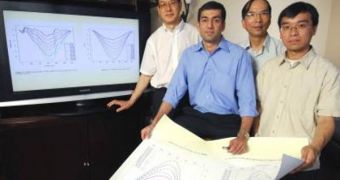The future of nanoengineering, and of any science involving the use of nanomaterials for that matter, is entirely dependent on tools that allow for precise measurements of the events unfolding at the nanoscale, while at the same time correcting errors that may appear in the process. Experts at the Georgia Institute of Technology (GIT) managed to devise such a statistical analysis tool. With the new technique, eliminating noises, systematic bias, and experimental artifacts from a nano-research is made easier than ever before.
“Our statistical model will be useful when the nanomaterials industry scales up from laboratory production because industrial users cannot afford to make a detailed study of every production run. The significant experimental errors can be filtered out automatically, which means this could be used in a manufacturing environment,” Georgia Institute of Technology Stewart School of Industrial and Systems Engineering Professor C. F. Jeff Wu explains about the innovation.
The technique, known as sequential profile adjustment by regression (SPAR), could also have an important benefit in the research industry, namely in reducing the amount of readings that it now takes to come to a scientific conclusion. Details of how the method works were published in the June 25th issue of the early edition of the journal Proceedings of the National Academy of Sciences (PNAS).
“In the past, we have really not known the statistical reliability of the data at this size scale. At the nanoscale, small errors are amplified. This new technique applies statistical theory to identify and analyze the data received from nanomechanics so we can be more confident of how reliable it is,” GIT School of Materials Science and Engineering Regents' Professor Zhong Lin Wang says.
“One of the key issues today in nanotechnology is whether the existing physical theories can still be applied to explain the phenomena we are seeing. We have tried to answer the question of whether we are truly observing new phenomena, or whether our errors are so large that we cannot see that the theory still works,” Wang concludes. He is also the GIT Center for Nanostructure Characterization and Fabrication Director.

 14 DAY TRIAL //
14 DAY TRIAL //